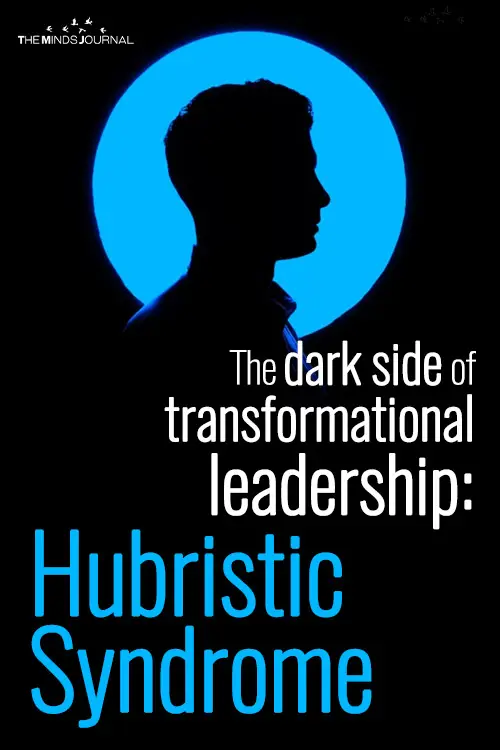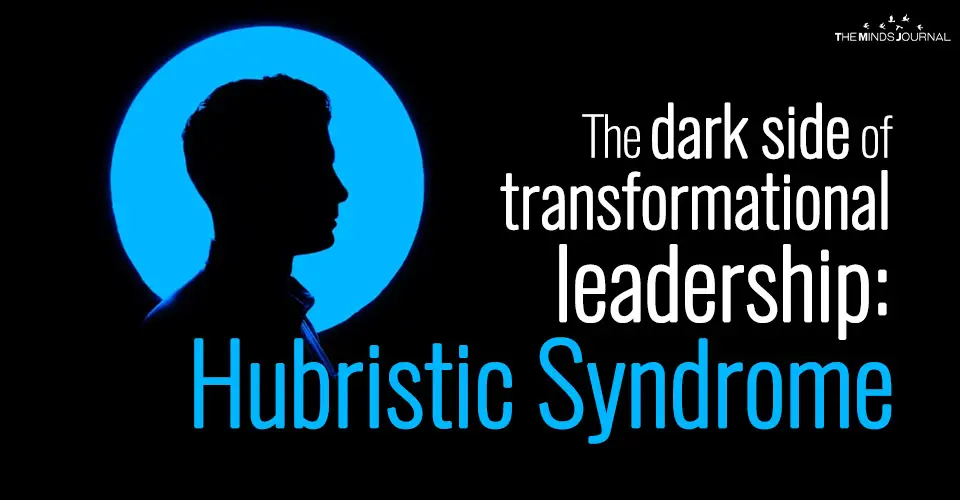‘IT’S ONLY HUBRIS IF I FAIL.’ JULIUS CAESAR
1. The concept of transformational leadership has been researched and written about for several decades and is currently the most popular leadership theory prevailing in the majority of business and governmental organizations (Mhatre & Riggio, 2014; Jonas, Stroebe, & Hewstone, 2014; Antonakis, 2012, The British Psychological Society, 2017).
2. The concept of transformational leadership goes beyond that of transactional leadership and includes leading by example as well as a “charismatic approach” to motivate people by “sharing credit for success and positively investing in others’ development” (The British Psychological Society, 2017, p. 34).
3. The concept of transformational leadership contains the following elements:
- individualized consideration (leader as an empathic mentor and coach),
- intellectual stimulation (leader as a challenger),
- idealized influence (leader as a role model),
- inspirational motivation (leader as a visionary) (Bass, 1985, as cited by Jonas et al., 2014).
The latter dimension of inspirational motivation is often called “charisma” and transformational and charismatic leadership became synonyms.
- Charisma is believed to be the most essential attribute of an effective leader who transforms their followers to sacrifice their own interests for a vision they made believe in (Jonas et al., 2014; Antonakis, 2016).
- Charisma is initially a Greek word related to a “divine gift” (Mhatre & Riggio, 2014), extraordinary personal power and charm (Antonakis, 2016).
Interestingly, the notion of charisma connected to leadership has been first used by Weber around the World War I (1909–1920; translated after the end of the World War II (1947)) (Mhatre & Riggio, 2014; Antonakis, 2012, 2016).
- Weber closely associated the rise of a charismatic leader and their visibility and acceptability with a crisis suggesting that only or at least especially crisis times give the leader a chance to evolve, to lead successfully, to be admired and followed (Mhatre & Riggio, 2014).
- Weber was followed by many more scientists researching this dimension like the most essential House in 1977, Burns in 1978, Conger and Kanungo in 1987 and 1998 (who came to the conclusion of the attribution perspective of the followers), Shamir in 1993, and Antonakis in 2012 and till now (who became essential in measuring and teaching charisma) (Garrard, 2018; Mhatre & Riggio, 2014; Antonakis, 2012, 2016).
However, transformational or charismatic leadership does not have solely positive sides. The main danger of a charismatic leader is when they turn hubristic and acquire what Owen (2006) called Hubristic Syndrome. The alarming majority of studies generally on leadership and especially on transformational leadership are focusing on its positive nature (Garrard, 2018). The notion of leadership is being “purified of questions related to power” (Tourish, 2018, pp. 138–139), starting already at business schools, which promote being and becoming extraordinary or an elite and plant the seeds of hubris. Owen (2006, pp. 548–551) describes the Greek mythology notion of hubris as “exaggerated pride, overwhelming self-confidence, and contempt for others”.
Read Top 10 Bad Leadership Behaviors That Destroy Organisations
Attribution and self-concept perspectives have a dangerous side, too, as leaders and subsequently, their organizations may hire and promote people primarily with values and traits similar to those of the leader in order to make following easier, which decreases diversity. Blinded by the high level of power and influence of their charisma, the leader runs into the danger of “placing conformity above critical thinking” (Tourish, 2018, pp. 141) and spreading respective dysfunctional organizational culture in order to make people follow their vision and thus execute that power. Moreover, a hubristic leader may stage an artificial crisis to wield power and charisma. Coming back to mentioning the World Wars, it might be unsurprisingly that the notion of charisma related to leadership started to develop during that time rich on positive but also negative examples of charismatic leaders.
Hubristic Syndrome is an acquired disorder, which can develop in a person in a significant position of power for one to nine years on average, and has following 14 symptoms (Owen & Davidson, 2009):
- A narcissistic propensity to see their world primarily as an arena in which to exercise power and seek glory
- A predisposition to take actions which seem likely to cast the individual in a good light — i.e. in order to enhance the image
- A disproportionate concern with image and presentation
- A messianic manner of talking about current activities and a tendency to exaltation
- Identification with the nation, or organization to the extent that the individual regards his/her outlook and interests as identical
- A tendency to speak in the third person or use the royal ‘we’
- Excessive confidence in the individual’s own judgment and contempt for the advice or criticism of others
- Exaggerated self-belief, bordering on a sense of omnipotence, in what they personally can achieve
- A belief that rather than being accountable to the mundane court of colleagues or public opinion, the court to which they answer is: History of God
- An unshakable belief that in that court they will be vindicated
- Loss of contact with reality; often associated with progressive isolation
- Restlessness, recklessness, and impulsiveness
- A tendency to allow their ‘broad vision’, about the moral rectitude of a proposed course, to obviate the need to consider practicality, cost or outcomes
- Hubristic incompetence, where things go wrong because too much self-confidence has led the leader not to worry about the nuts and bolts of policy
If some of the symptoms can be found also among the symptoms of anti-social personality disorder, histrionic personality disorder, and narcissistic personality disorder, the symptoms 5, 6, 10, 12, and 13 are unique.
Read 15 Must-Have Qualities Of A Good Leader
There is very few research on the dark side of transformational or charismatic leadership, Hubristic Syndrome being the major dark side and the one with the most dangerous consequences for the respective leader’s environment. Particularly in the current age of uncertainty and unpredictability and thus constant crises, hubristic leaders flourish deceiving with their charisma people who are scared and do not wish to think critically and independently or are unable to do so due to their limited erudition. Such leaders are strongly interested in containing man-made volatility, uncertainty, complexity, and ambiguity (or the abbreviation VUCA born in military circles and then adopted by the business world (Kinsinger, P., & Walch, K., 2012)). Fuelled by the drug of power, hubristic leaders spread the cancer of their unsaturated ego among their organizations, communities, and countries. Maybe the time has come to become cautious about transformational and charismatic leadership, which was born for good but seems to be increasingly abused. If something derails too strongly out of balance in nature, it often leads to natural disasters. Let’s not let it arrive at the point of no return.
References
- Antonakis, J. (2012). Transformational and Charismatic Leadership.The Nature of Leadership. pp. 256–289. Los Angeles: Sage.
- Antonakis, J., Bastardoz, N., Jacquart, P., & Shamir, B. (2016). Charisma: An Ill-Defined and Ill-measured Gift. Annual Review of Organizational Psychology and Organizational Behavior. 3. Retrieved from https://serval.unil.ch/resource/serval:BIB_43EBA02BAD5E.P001/REF
- The British Psychological Society. (2017). Psychology at work: Improving wellbeing and productivity in the workplace. Leicester: The British Psychological Society.
- Garrard, P. (Ed.). (2018). The Leadership Hubris Epidemic: Biological Roots and Strategies for Prevention. London: Palgrave McMillan.
- Garrard, P., Rentoumi, V., Lambert, C., & Owen, D. (2013). Linguistic biomarkers of Hubris syndrome. Cortex. pp. 1–15. Retrieved from http://www.lorddavidowen.co.uk/wp-content/uploads/2013/10/PGarrardpaper.pdf
- Jonas, K., Stroebe, W., & Hewstone, M. (2014). Sozialpsychologie. Berlin: Springer.
- Kinsinger, P., & Walch, K. (2012). Living and Leading in a VUCA World. Retrieved from
- Mhatre, K. H. & Riggio, R. E. (2014). Charismatic and Transformational Leadership: Past, Present, and Future. In Day, D. V. (Ed.). The Oxford Handbook of Leadership and Organizations. doi: 10.1093/oxfordhb/9780199755615.013.012
- Owen, D. (2006). Hubris and Nemesis in Heads of Government. Journal of the Royal Society of Medicine. 99(11). pp. 548–551. doi: 10.1258/jrsm.99.11.548
- Owen, D. & Davidson, J. (2009). Hubris syndrome: An acquired personality disorder? A study of US Presidents and UK Prime Ministers over the last 100 years. Brain, 132(5), pp.1396–1406. Retrieved fromhttps://academic.oup.com/brain/article/132/5/1396/354862
- Rodgers, C. (2011). Hubris Syndrome: An emergent outcome of the complex social process of everyday interaction? Retrieved from https://pdfs.semanticscholar.org/159c/9950f273120736ce71412793b1c5bcf1b797.pdf
- Tourish, D. (2018). Dysfunctional Leadership in Corporations. In Garrard, P. (Ed.), The Leadership Hubris Epidemic: Biological Roots and Strategies for Prevention (pp.137–162). London: Palgrave McMillan.









Leave a Reply
You must be logged in to post a comment.